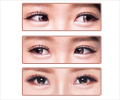An interesting study by University of Chicago researchers has found that love and sexual desire in people can easily be identified by assessing their eye movements.

The scientists performed two experiments to test visual patterns in order to assess romantic love and sexual desire, the two different emotional and cognitive states that are usually hard to differentiate from one another by merely looking.
As part of the test, male and female students from the University of Geneva viewed a series of black-and-white photographs of persons they had never met.
In part one of the test, the students viewed photos of young, adult heterosexual couples who were looking at or interacting with each other.
In part two, participants were shown the photographs of attractive individuals of the opposite sex who were looking directly at the camera/viewer. There was no nudity or erotic images in the photos.
In both tests, the students were asked to decide quickly whether they perceived people in the pictures as eliciting feelings of sexual desire or romantic love.
Advertisement
The result states that people tended to visually fixate on the face when they said an image elicited a feeling of romantic love and the subjects' eyes moved from the face to fixate on the rest of the body when the images evoked sexual desire. The effect was found in both male and female participants.
Advertisement
The Tiffany and Margaret Blake Distinguished Service Professor and director of the Center for Cognitive and Social Neuroscience, co-author John Cacioppo, said that the study would contribute to the development of a biomarker that differentiates feelings of romantic love versus sexual desire as it identified the eye patterns that were specific to love-related stimuli.
"An eye-tracking paradigm may ultimately offer a new avenue of diagnosis in clinicians' daily practice or for routine clinical exams in psychiatry and couple therapy,” he said.
The report was published online in the journal Psychological Science.
Source-Medindia















